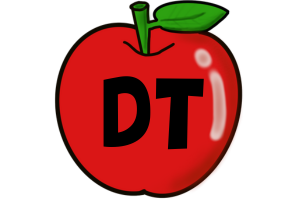Education serves as an essential instrument for personal development and societal progression. It has evolved considerably over the centuries, especially in recent years with the advent of technological advancements. These changes have opened doors to diverse types of learning environments, a term encompassing an array of settings and contexts that facilitate the acquisition of knowledge. Understanding these types of learning environments and their detailed implications is crucial for stakeholders including parents, educators, and policymakers.

What Makes a Learning Environment?
Traditionally, when we thought of a learning environment, it would often summon an image of a physical classroom equipped with desks, chairs, and a chalkboard. But as we have advanced into the 21st century, this term has transformed to encompass more than just the physical layout of a classroom. It extends to include the culture that is established within a school, the interpersonal relationships between teachers and students, and the pedagogical strategies that teachers employ to facilitate learning. A learning environment also takes into account the psychological comfort and sense of safety a student feels within these spaces.
The spotlight on creating a positive, supportive, and engaging learning environment has intensified over recent years, with studies indicating its significant impact on a student’s ability to absorb and retain knowledge.
Let’s delve deeper into the three primary types of learning environments: Traditional, Virtual, and Hybrid.
Traditional Learning Environment: Beyond the Physical Classroom
A traditional learning environment, also referred to as face-to-face learning, is the oldest form of imparting knowledge. This type of environment relies on the physical presence of both teachers and students, with teaching activities primarily taking place in a physical setting such as a classroom, lecture hall, or laboratory.
Pros of Traditional Learning Environment
- Immediate Interaction: Teachers are physically present to answer queries and provide clarifications, which often leads to a richer understanding of the content. This immediate feedback can be crucial for students who learn better through direct instruction and personal interaction.
- Routine and Discipline: Regular schedules and consistent routines help students develop discipline, punctuality, and time-management skills.
- Social Skills Development: Traditional learning environments provide ample opportunities for direct interaction, peer learning, and collaboration, promoting the development of essential social skills.
- Instructor-Led Adaptability: Instructors can promptly gauge the students’ understanding and adapt the lesson pace or method accordingly.
Cons of Traditional Learning Environment
- Lack of Flexibility: Traditional environments follow a rigid timetable, which may not cater to all students’ individual pace and learning styles.
- Susceptibility to Interruptions: Situations like pandemics, natural disasters, or personal circumstances can disrupt the continuity of learning.
- High Financial Demand: Traditional learning often requires significant resources, including infrastructure, maintenance, and commuting costs.
Case Study: Harvard Study of Undergraduate Writing
The effectiveness of the traditional learning environment was underscored by a study conducted by Harvard University. This study revealed that students who experienced in-person interaction with instructors and classmates demonstrated marked improvement in their writing and reasoning skills.
Virtual Learning Environment: Harnessing Technology in Education
A virtual learning environment represents a shift from physical to online spaces. This type of environment harnesses technology to provide education beyond geographical and temporal limitations, making learning more accessible to students regardless of location or personal circumstances.
Pros of Virtual Learning Environment
- Flexibility: Virtual learning offers the freedom to learn from anywhere at any time, accommodating students with different learning paces and schedules.
- Personalized Learning: Digital platforms can tailor learning experiences to suit individual strengths and weaknesses, helping students progress at their own pace.
- Resource Availability: An array of courses and learning resources is readily available online, expanding the scope of learning beyond traditional curricula.
- Cost-Effective: Online learning eliminates many costs associated with traditional learning, making education more affordable.
Cons of Virtual Learning Environment
- Limited Social Interaction: Limited face-to-face interactions can lead to a sense of isolation and can impede the development of essential social skills.
- Dependence on Technology: Access to quality online learning requires a stable internet connection and suitable digital devices, which may not be available to all students.
- Motivation and Self-Discipline: With increased autonomy comes the need for enhanced self-motivation and discipline, which some students might struggle with.
Case Study: Khan Academy Usage Impact on Student Performance
An independent study conducted by SRI International showed that students who used Khan Academy, a leading virtual learning platform, outperformed their counterparts who did not use online resources.
Hybrid Learning Environment: A Balanced Approach
A hybrid learning environment combines the best of traditional and virtual environments. This type of learning environment includes a mix of face-to-face interactions and online learning, aiming to create a flexible and balanced educational approach.
Pros of Hybrid Learning Environment
- Flexibility and Interaction: Hybrid environments combine the flexibility of online learning with the personal interaction of traditional learning.
- Tailored Learning Experience: This method allows instructors to provide a more personalized and varied approach, catering to different learning styles and paces.
- Enhanced Engagement: The combination of online resources and in-person instruction can foster a more engaging learning experience.
Cons of Hybrid Learning Environment
- Technological Challenges: Similar to virtual learning environments, hybrid learning also depends on reliable technology and internet access.
- Increased Demand on Teachers: This model can be demanding on teachers as they need to manage both in-person and online instructions and resources.
- Complexity in Execution: Implementing a successful hybrid model requires strategic planning and organization to ensure smooth integration between online and in-person elements.
Case Study: University of Central Florida (UCF) Hybrid Learning Model
UCF, a pioneer in hybrid learning, found that their hybrid courses had better outcomes compared to traditional and online classes. This model facilitated a flexible and inclusive environment, accommodating various learning styles.
The Future of Learning Environments
As we navigate the 21st century, flexibility, personalization, and inclusivity will become more important in learning environments. Innovations in technology will continue to redefine educational spaces, making learning more accessible and engaging. We can expect to see more blended or hybrid models as educators seek to capitalize on the benefits of both traditional and virtual environments.
Further Reading
To learn more about these learning environments, here are some valuable resources:
- “The End of Education: Redefining the Value of School” by Neil Postman. This book explores the purpose of education in our society and provides thought-provoking insights into how we can redefine our approach towards it.
- “Learning Spaces: Creating Opportunities for Knowledge Creation in Academic Life” by Maggi Savin-Baden. This book provides an in-depth understanding of how learning spaces are evolving and how they can facilitate knowledge creation.
- “Digital Teaching Platforms: Customizing Classroom Learning for Each Student” by Chris Dede and John Richards. This book delves into how digital platforms are transforming education and provides insight into how they can be leveraged to enhance learning.
A deeper understanding of the types of learning environments allows us to be more informed and strategic in designing education systems. It also prepares us for future educational trends, ensuring that we are ready to adapt and evolve as learning continues to transform.
Conclusion
In conclusion, the 21st century has seen an evolution in the types of learning environments we have come to recognize. The traditional, face-to-face classrooms have been complemented, and in some instances replaced, by virtual and hybrid models. Each of these learning environments brings its unique strengths and challenges. While traditional environments foster immediate interaction and social skill development, they may lack the flexibility and resource availability that virtual environments offer. Meanwhile, hybrid models seek to blend the advantages of both.
Understanding these learning environments and their intricacies is crucial to meet the diverse needs of learners and to create more equitable, engaging, and effective educational experiences. We must not overlook the importance of continuous learning and adaptation. As educators, parents, and policymakers, it’s essential to remain open to new developments, always striving to provide the best possible learning environment for our learners.
In our rapidly changing world, education will continue to evolve, and new types of learning environments will emerge. Staying informed and adaptable is the best way to ensure we’re prepared for whatever comes next in the exciting world of learning.



3 Comments